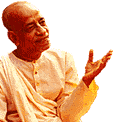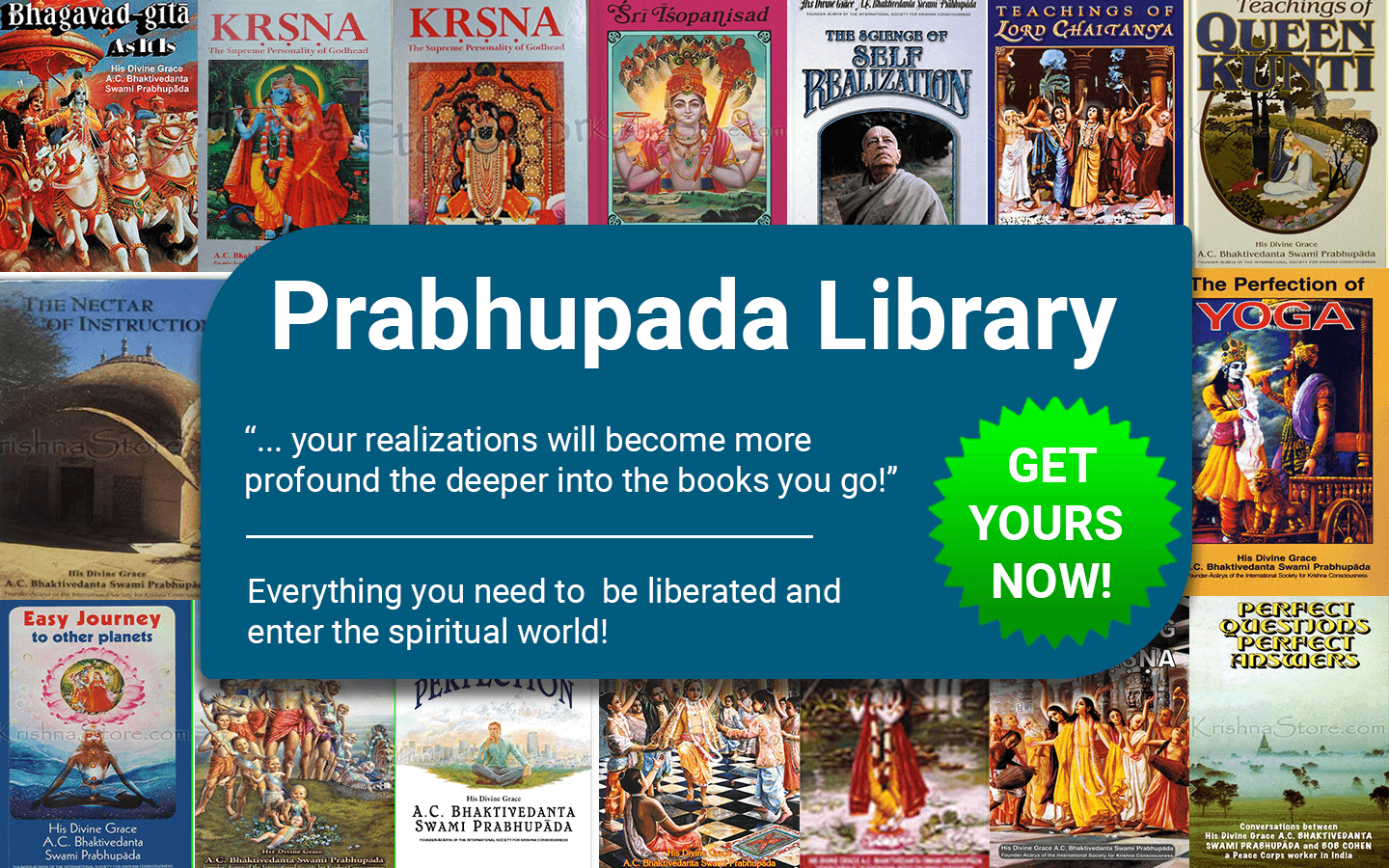Chapter 4: Transcendental Knowledge
Bg 4.35
TEXT 35
yaj jnatva na punar moham
evam yasyasi pandava
yena bhutany asesani
draksyasy atmany atho mayi
evam yasyasi pandava
yena bhutany asesani
draksyasy atmany atho mayi
SYNONYMS
yat—which; jnatva—knowing; na—never; punah—again; moham—illusion; evam—like this; yasyasi—you shall go; pandava—O son of Pandu; yena—by which; bhutani—all living entities; asesani—totally; draksyasi—you will see; atmani—in the Supreme Soul; atho—or in other words; mayi—in Me.
TRANSLATION
And when you have thus learned the truth, you will know that all living beings are but part of Me—and that they are in Me, and are Mine.
PURPORT
The result of receiving knowledge from a self-realized soul, or one who knows things as they are, is learning that all living beings are parts and parcels of the Supreme Personality of Godhead, Lord Sri Krsna. The sense of a separated existence from Krsna is called maya (ma—not, ya—this). Some think that we have nothing to do with Krsna, that Krsna is only a great historical personality and that the Absolute is the impersonal Brahman. Factually, as it is stated in the Bhagavad-gita, this impersonal Brahman is the personal effulgence of Krsna. Krsna, as the Supreme Personality of Godhead, is the cause of everything. In the Brahma-samhita it is clearly stated that Krsna is the Supreme Personality of Godhead, the cause of all causes. Even the millions of incarnations are only His different expansions. Similarly, the living entities are also expansions of Krsna. The Mayavadi philosophers wrongly think that Krsna loses His own separate existence in His many expansions. This thought is material in nature. We have experience in the material world that a thing, when fragmentally distributed, loses its own original identity. But the Mayavadi philosophers fail to understand that Absolute means that one plus one is equal to one, and that one minus one is also equal to one. This is the case in the absolute world.
For want of sufficient knowledge in the absolute science, we are now covered with illusion, and therefore we think that we are separate from Krsna. Although we are separated parts of Krsna, we are nevertheless not different from Him. The bodily difference of the living entities is maya, or not actual fact. We are all meant to satisfy Krsna. By maya alone Arjuna thought that the temporary bodily relationship with his kinsmen was more important than his eternal spiritual relationship with Krsna. The whole teaching of the Gita is targetted toward this end: that a living being, as His eternal servitor, cannot be separated from Krsna, and his sense of being an identity apart from Krsna is called maya. The living entities, as separate parts and parcels of the Supreme, have a purpose to fulfill. Having forgotten that purpose, since time immemorial they are situated in different bodies, as men, animals, demigods, etc. Such bodily differences arise from forgetfulness of the transcendental service of the Lord. But when one is engaged in transcendental service through Krsna consciousness, one becomes at once liberated from this illusion. One can acquire such pure knowledge only from the bona fide spiritual master and thereby avoid the delusion that the living entity is equal to Krsna. Perfect knowledge is that the Supreme Soul, Krsna, is the supreme shelter for all living entities, and giving up such shelter, the living entities are deluded by the material energy, imagining themselves to have a separate identity. Thus, under different standards of material identity, they become forgetful of Krsna. When, however, such deluded living entities become situated in Krsna consciousness, it is to be understood that they are on the path of liberation, as confirmed in the Bhagavatam: muktir hitvanyatha rupam svarupena vyavasthitih. Liberation means to be situated in one's constitutional position as the eternal servitor of Krsna (Krsna consciousness).
Copyright (c) 1972 by His Divine Grace A.C. Bhaktivedanta Swami Prabhupada











